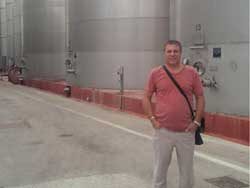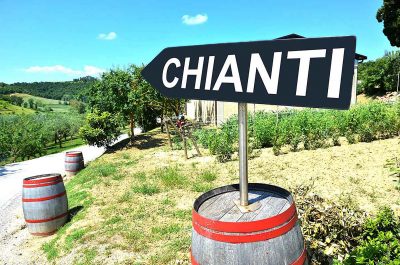Montreal & Indian Reserves
By Nick Bartman
You and I sit together to plan the perfect wine crime. Of course, the end game is to cheat the public, but to produce the wine without being caught do we hideaway in some subterranean Blofeld bunker, or do the opposite and stick ourselves right under everyone’s noses?
In this case, the criminals were Canadian wine trader Luca Gaspari, and his accomplice Floyd Lahache, who imported nearly 60 bulk containers, each with 23,000 litres in flexi tanks, of Italian table wine into Ontario, which they then trucked to the Mohawk Kahnawake Indian Reserve to a factory unit, not far from Montreal.
Luca Gaspari in Puglia, Italy
The wine was then manipulated, implanting floral, nutty, and fruit flavors to mimic Chianti, and decanted into Canadian-made glass bottles and labeled as Chianti, whilst also purloining some reputable brands from the region, for good measure.
From that point, it was distributed direct to a few end users in the Indian Reserve, but predominately around the province of Quebec, via a network of individuals, for approximately CAN$6 a bottle. Some 1.8 million were sold.
The perfect crime became imperfect, due to tax. Had the wine remained exclusively in the reserve, which has unique tax laws, then, leaving the mislabeling issue to one side, it would have been selling today.
Italian table wine was altered to mimic Chianti
But due to Gaspari and Lahache’s excessive ambitions, the whistle somehow got blown that the wine should only have been on sale in the provincial monopoly shops, SAQ (Societe des Alcools du Quebec).
The tax authorities duly rolled up their sleeves and barreled into the factory with the police, where they also discovered the fake labeling, which then resulted in consumer protection laws being invoked for duping the public. The police arrested Gaspiri and Lahache in May 2015. The pair was locked up, with their lawyer uselessly pronouncing they were innocent until proven guilty.
The most incredible part of this bizarre story is that 1.8 million bottles exchanged hands on the black market, with some 10 million glasses of this fake wine being drunk, and not one person flagged a problem.
Furthermore, the factory cum bottling plant was far from hidden, being just off a busy main road. The address was freely available on the internet, and there was a nice big sign outside with the word “WINERY”.
Over the period, there was the movement of some 120 shipping containers, not to mention other collections and deliveries, particularly the 1.8 million bottles that were delivered to the factory, filled, and transported away to customers. But, the Reserve only had some 4,000 adults, not all who drank wine.
One can only conclude the crime was so blatant that none of the many local public authorities thought to check the place. For four long years, the villains could not believe their luck, until the taxman wised up. And one might hazard a bet that was the one thing the bad guys did not reckon on happening.

